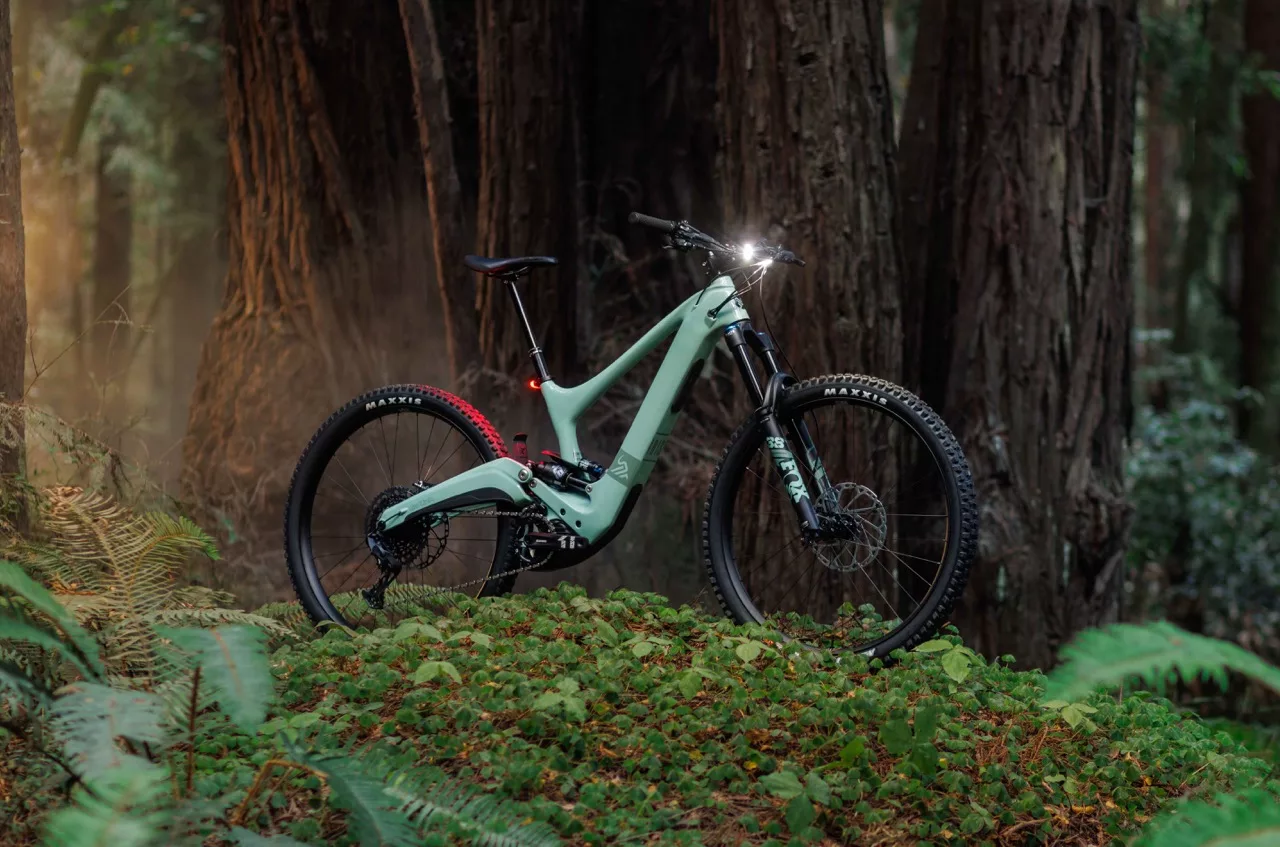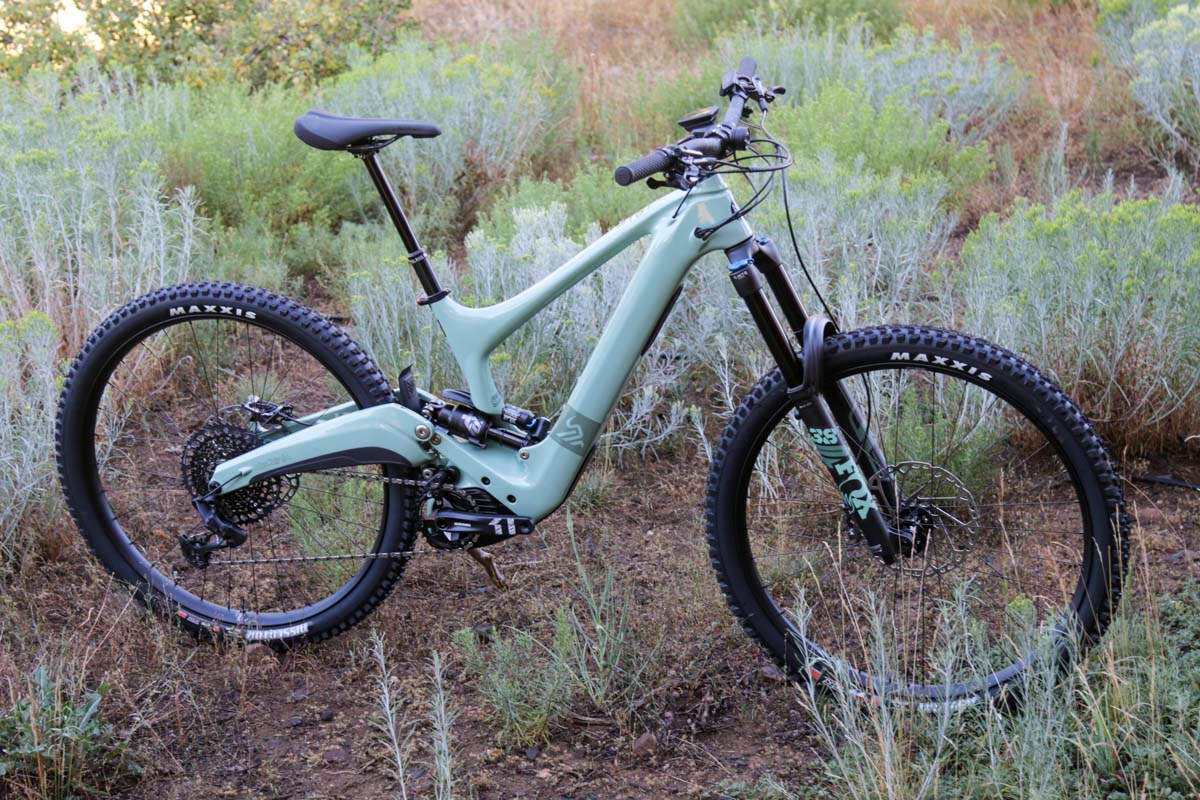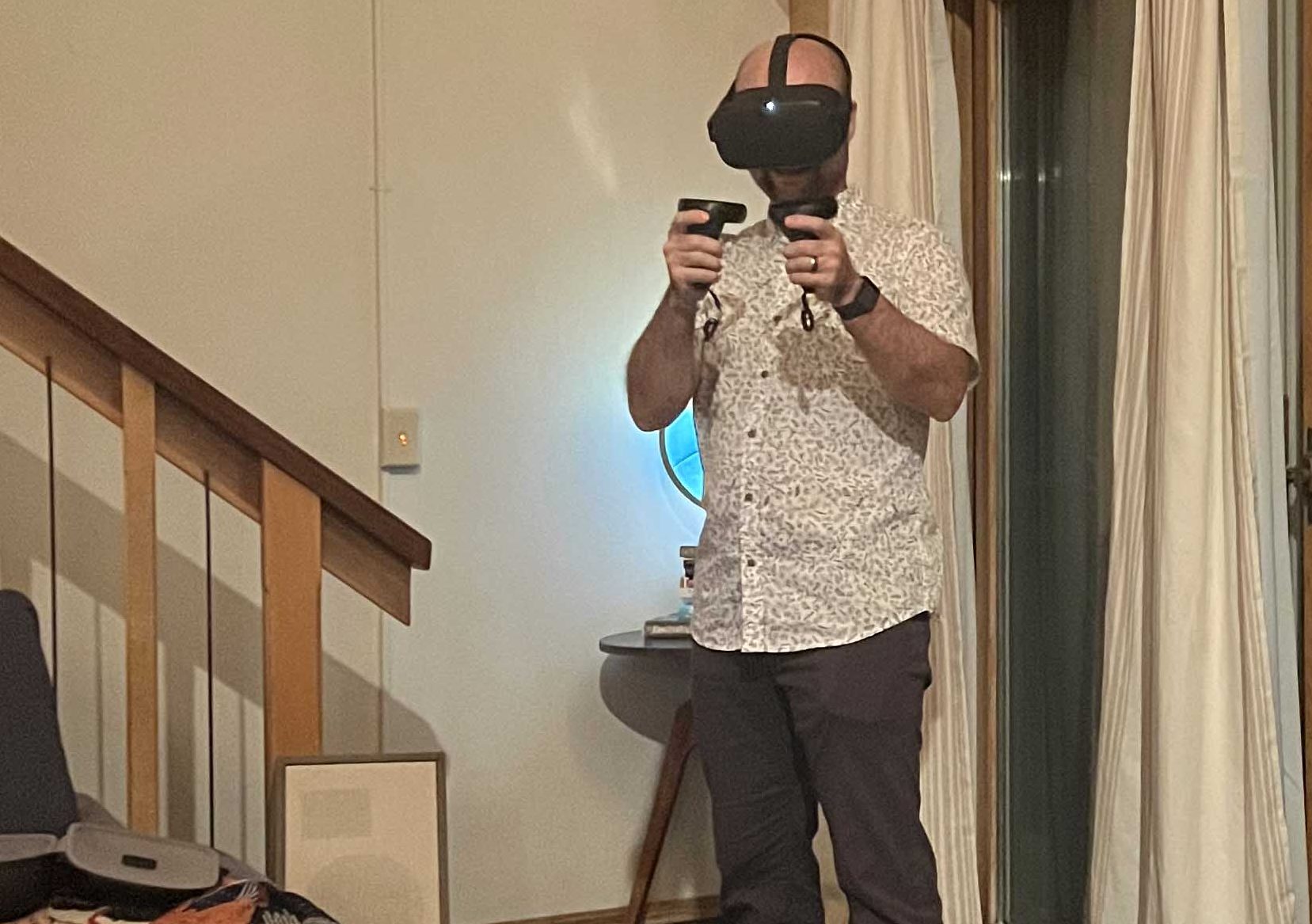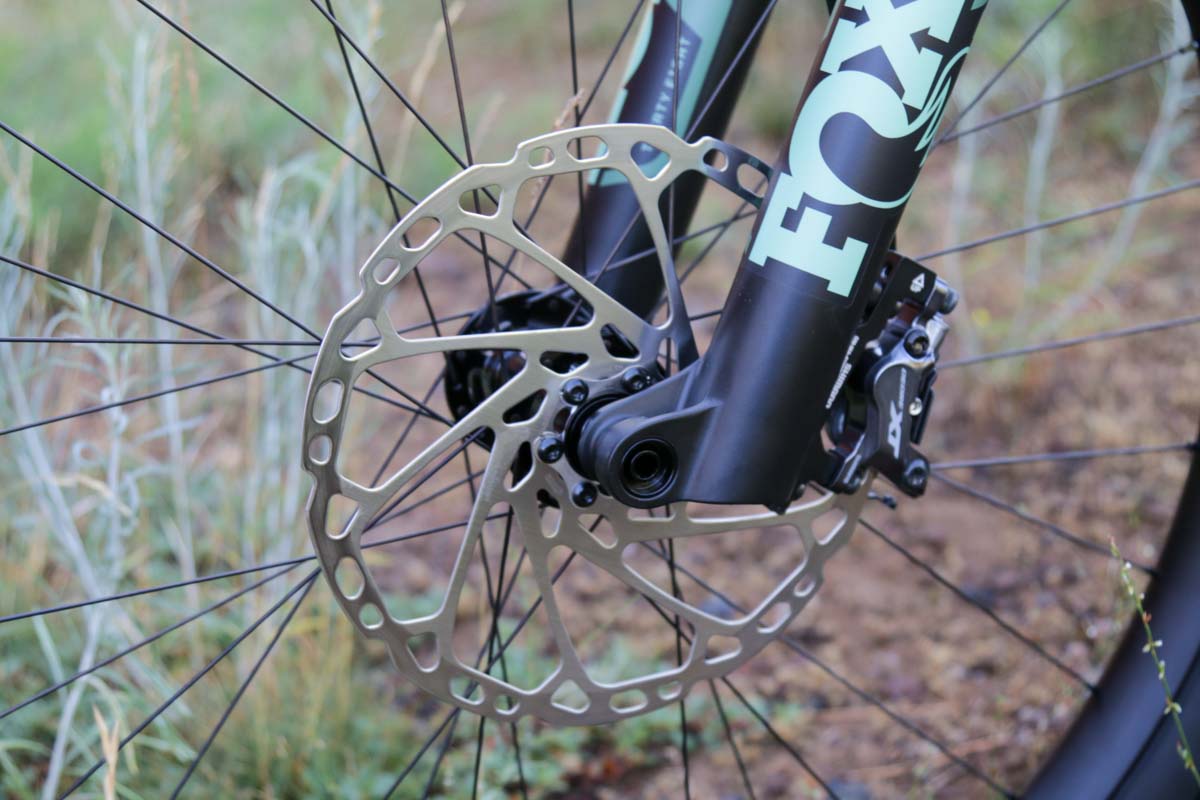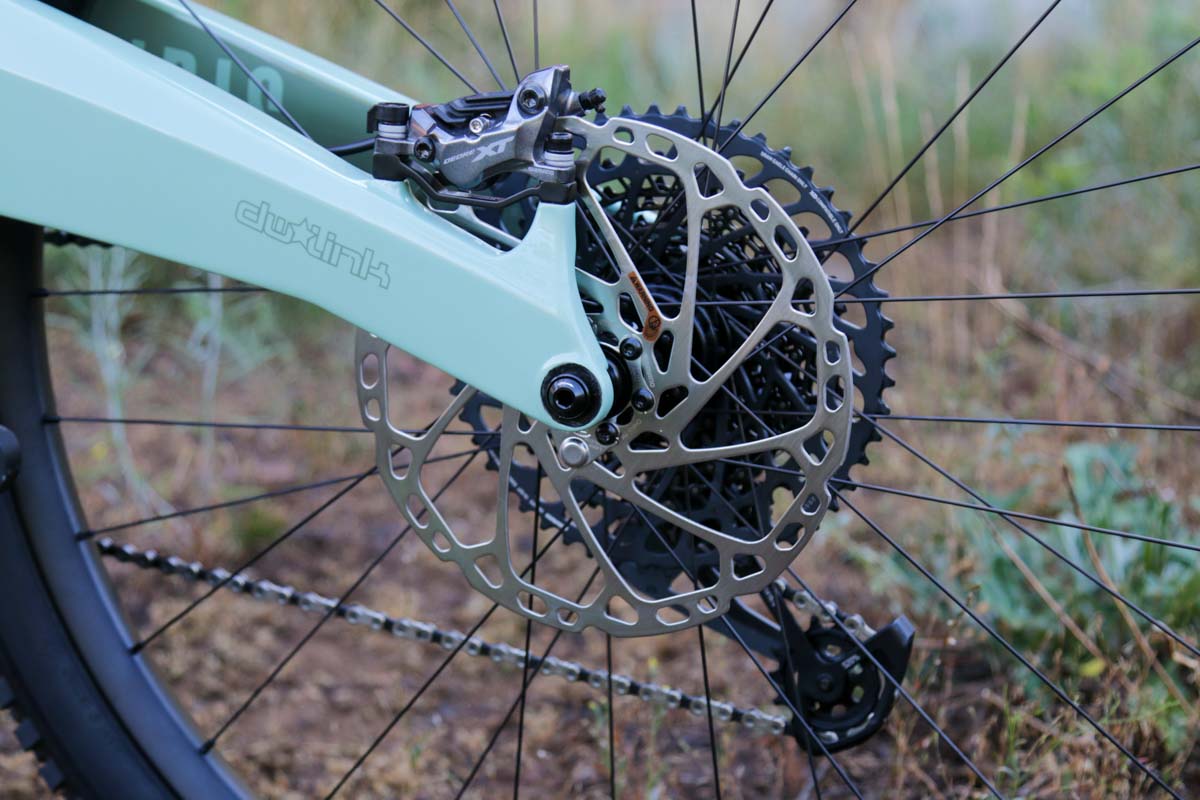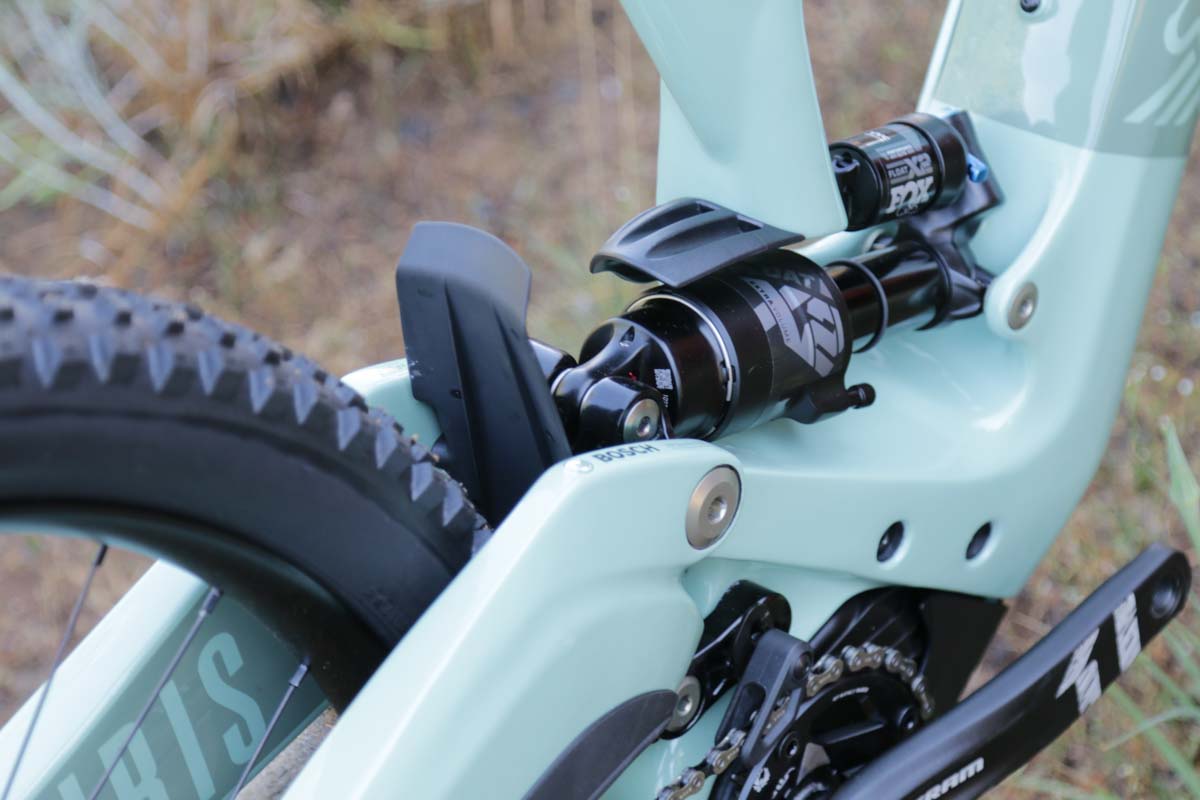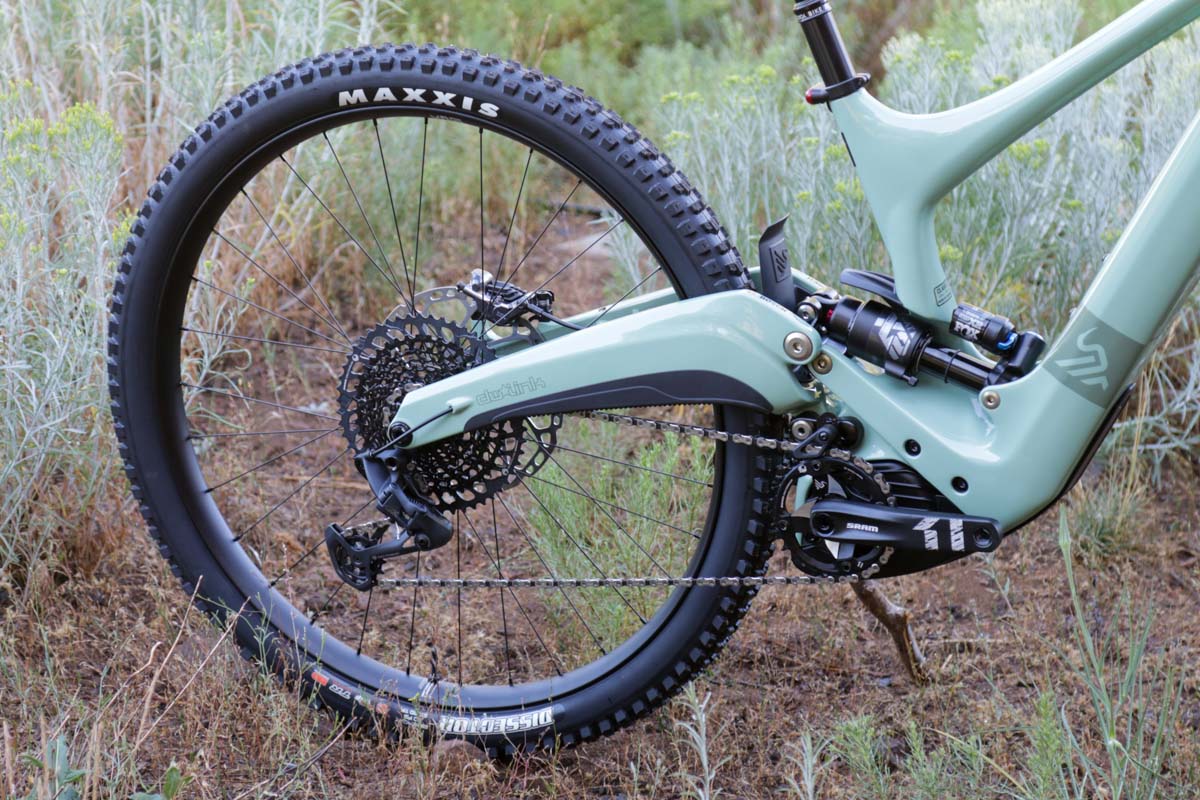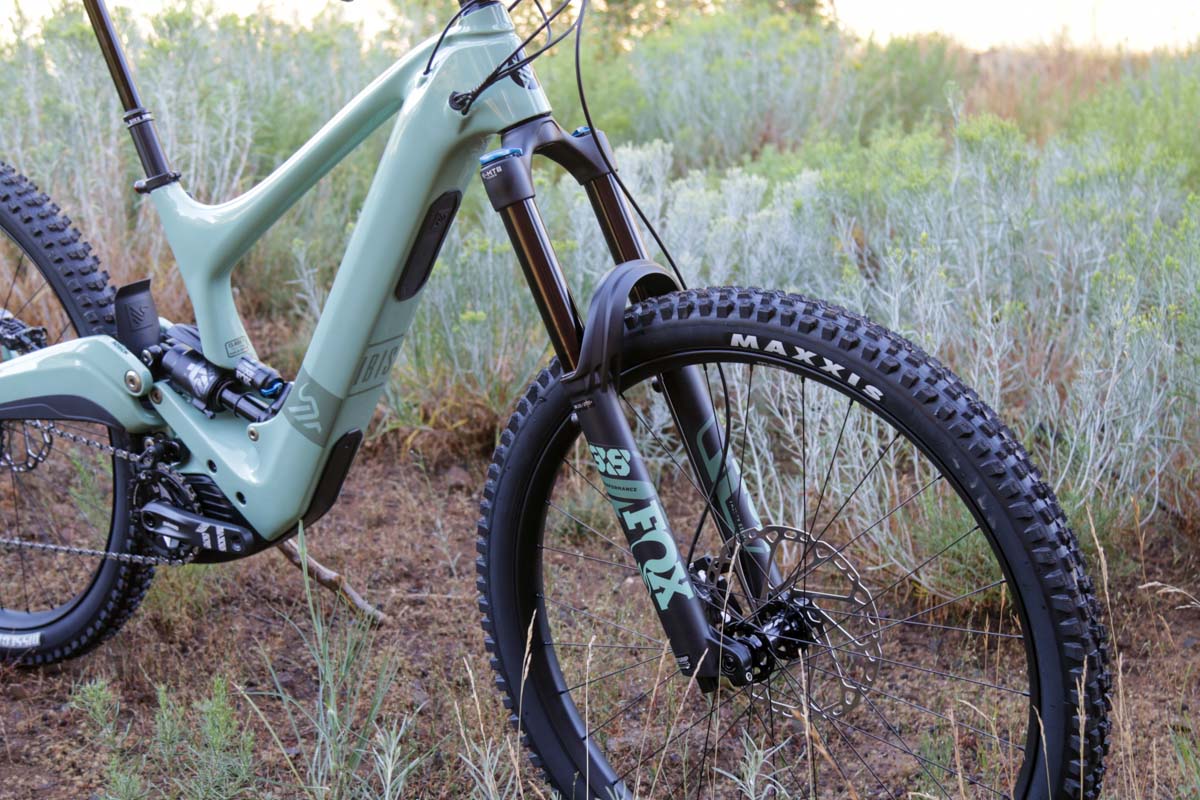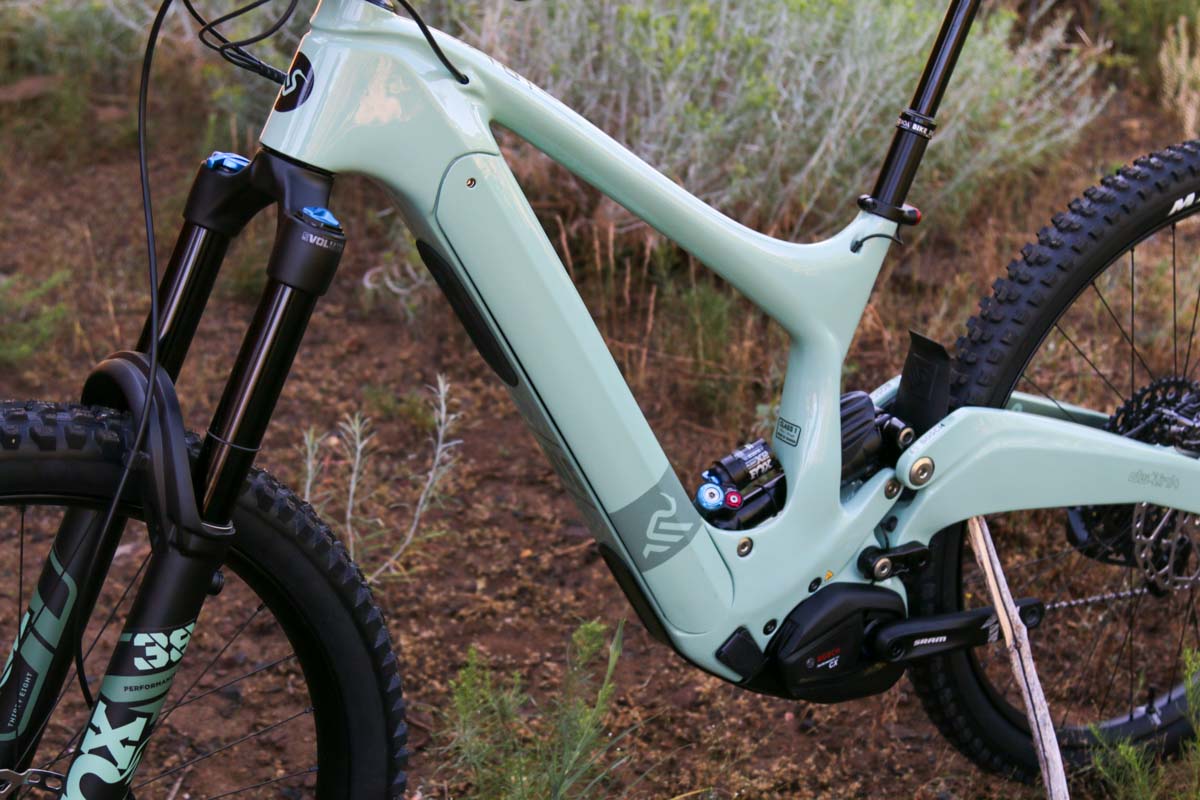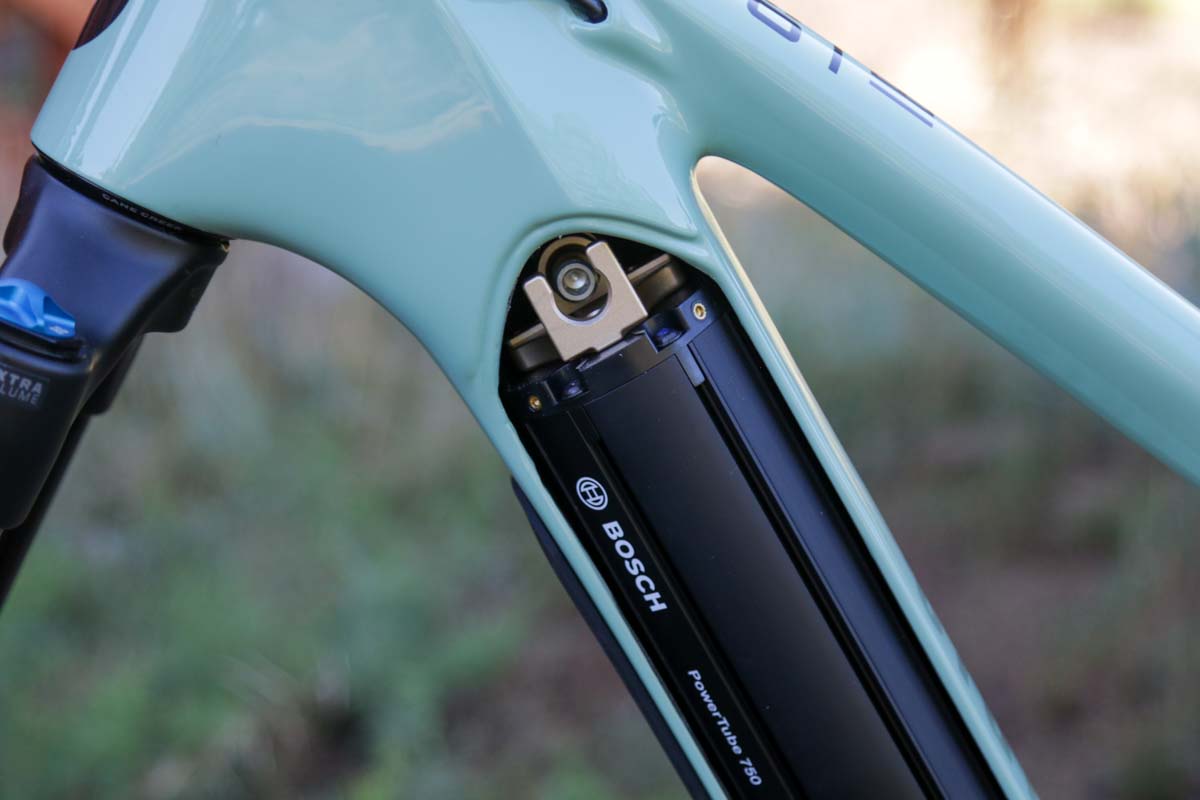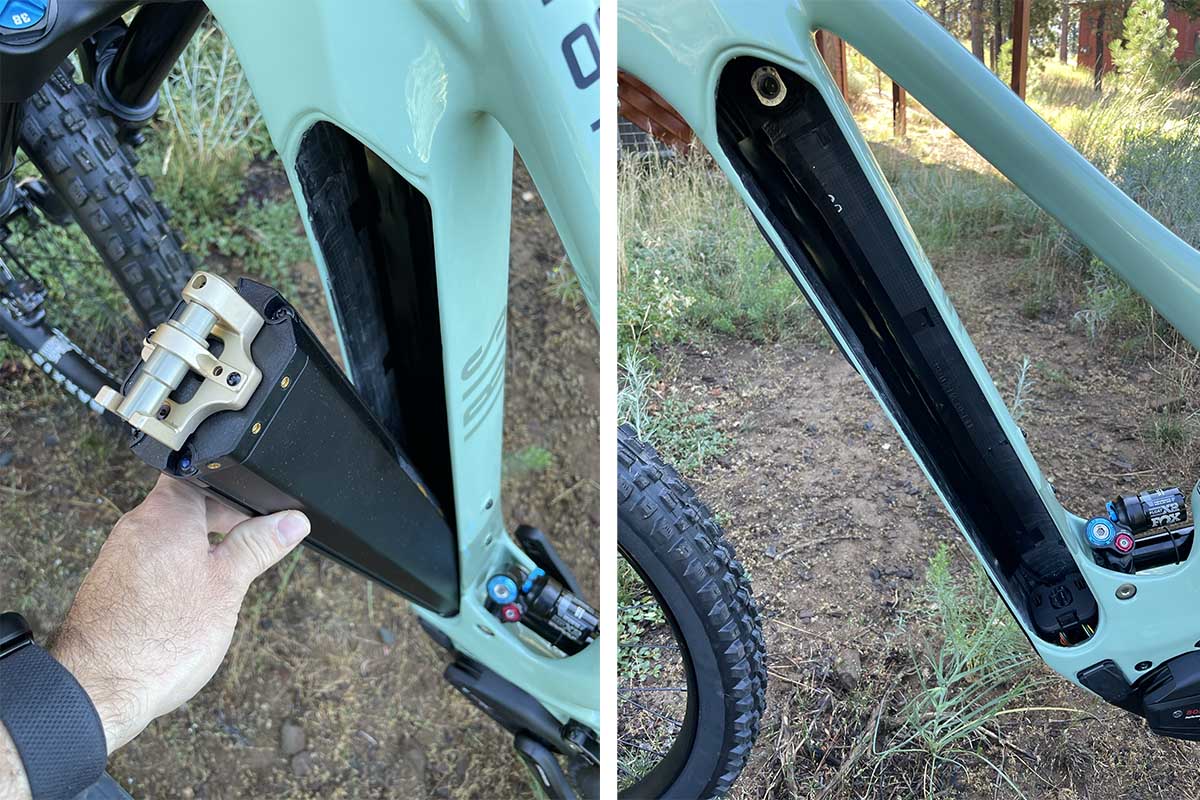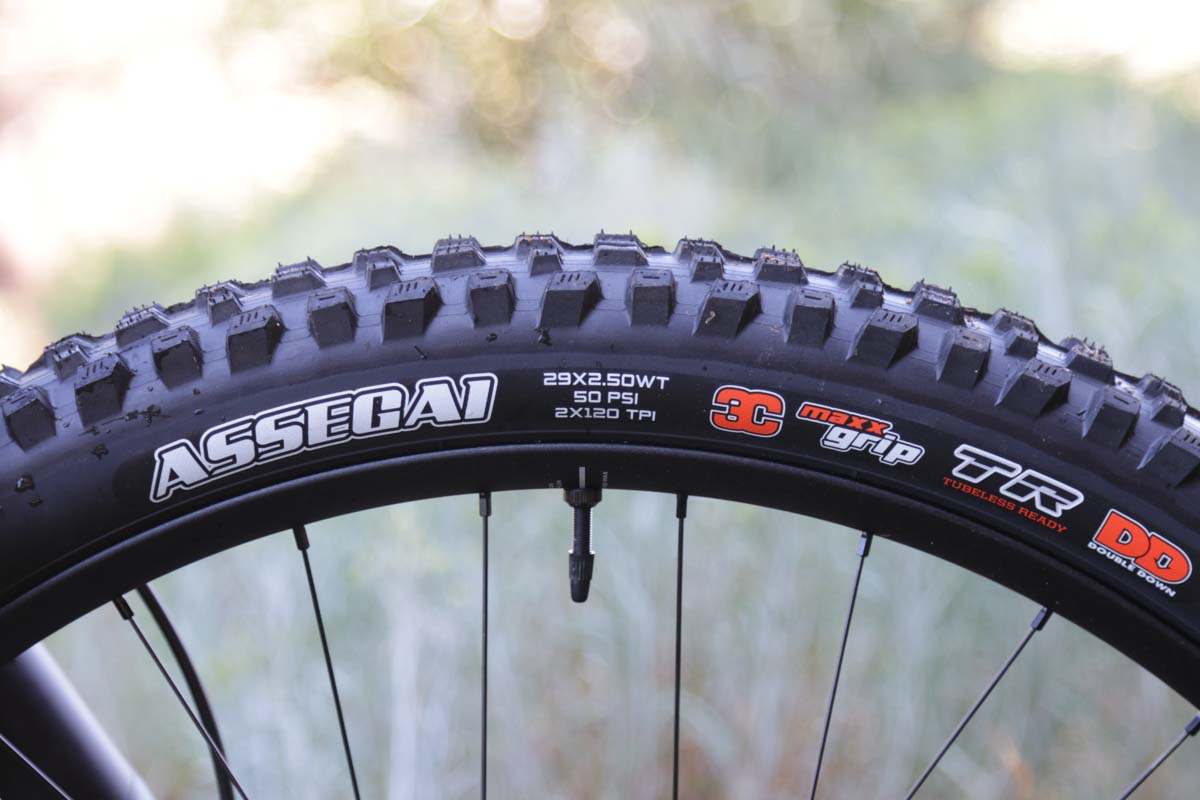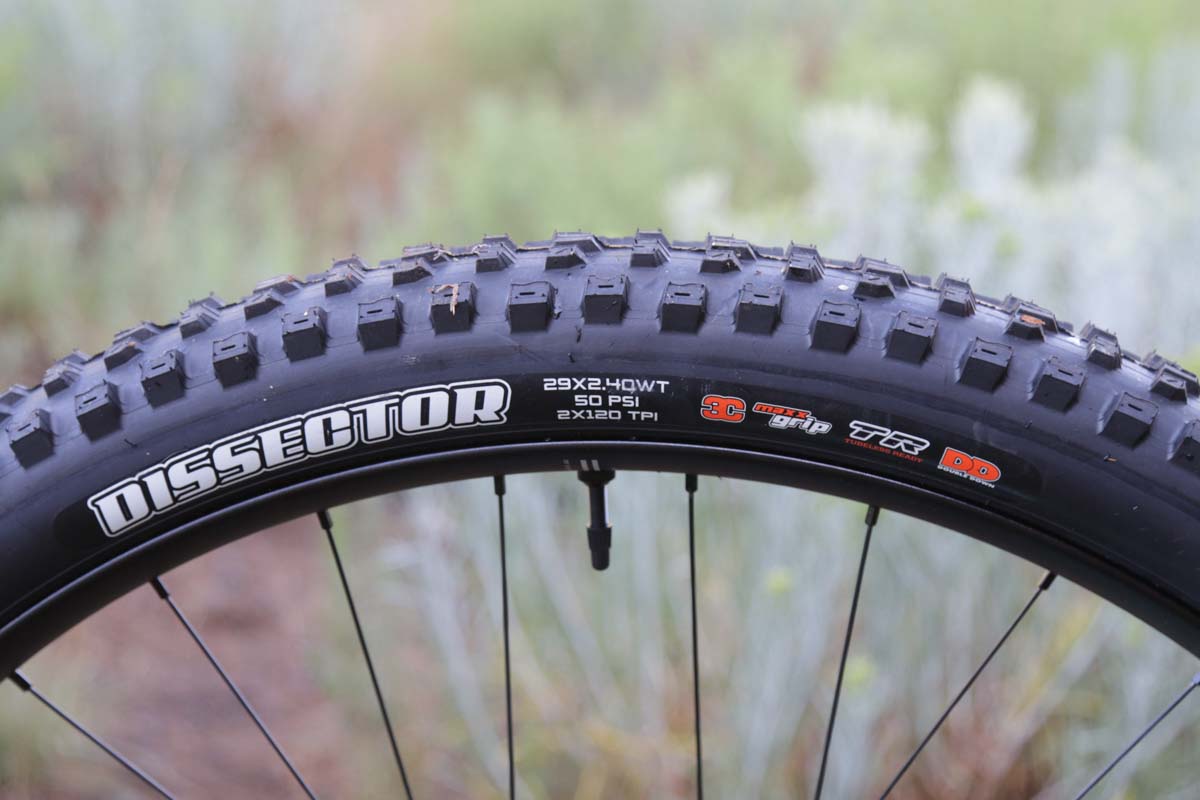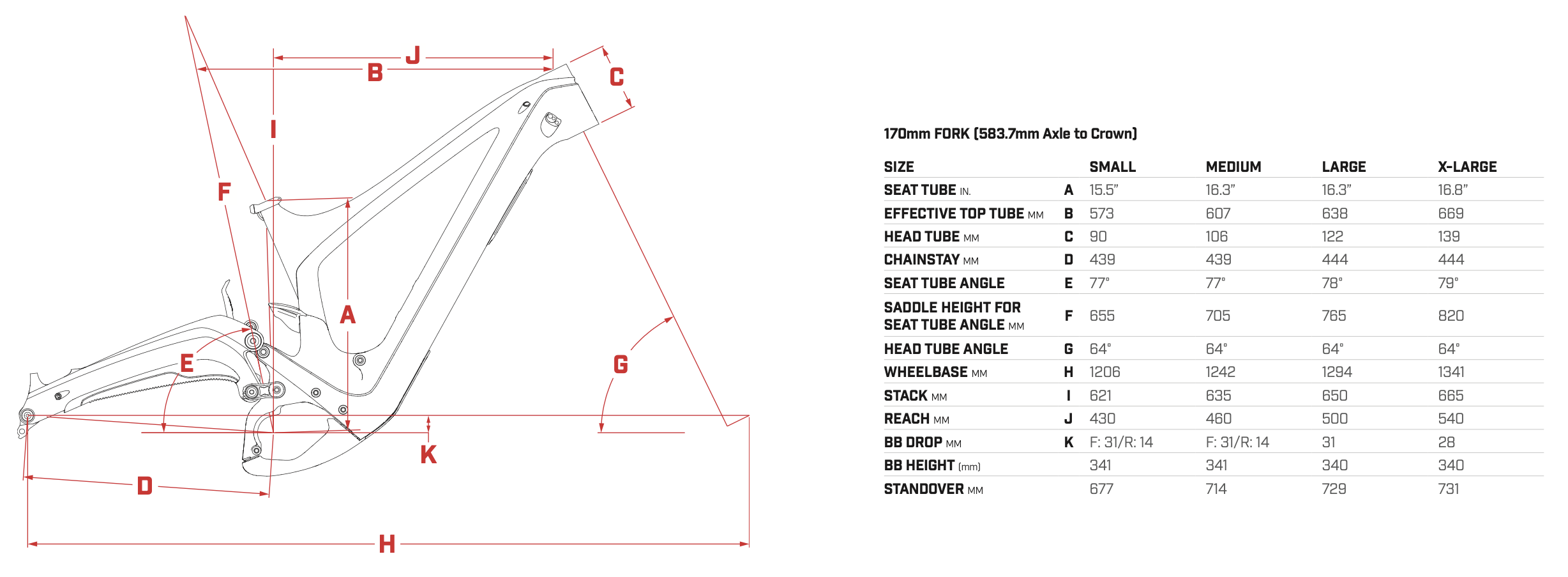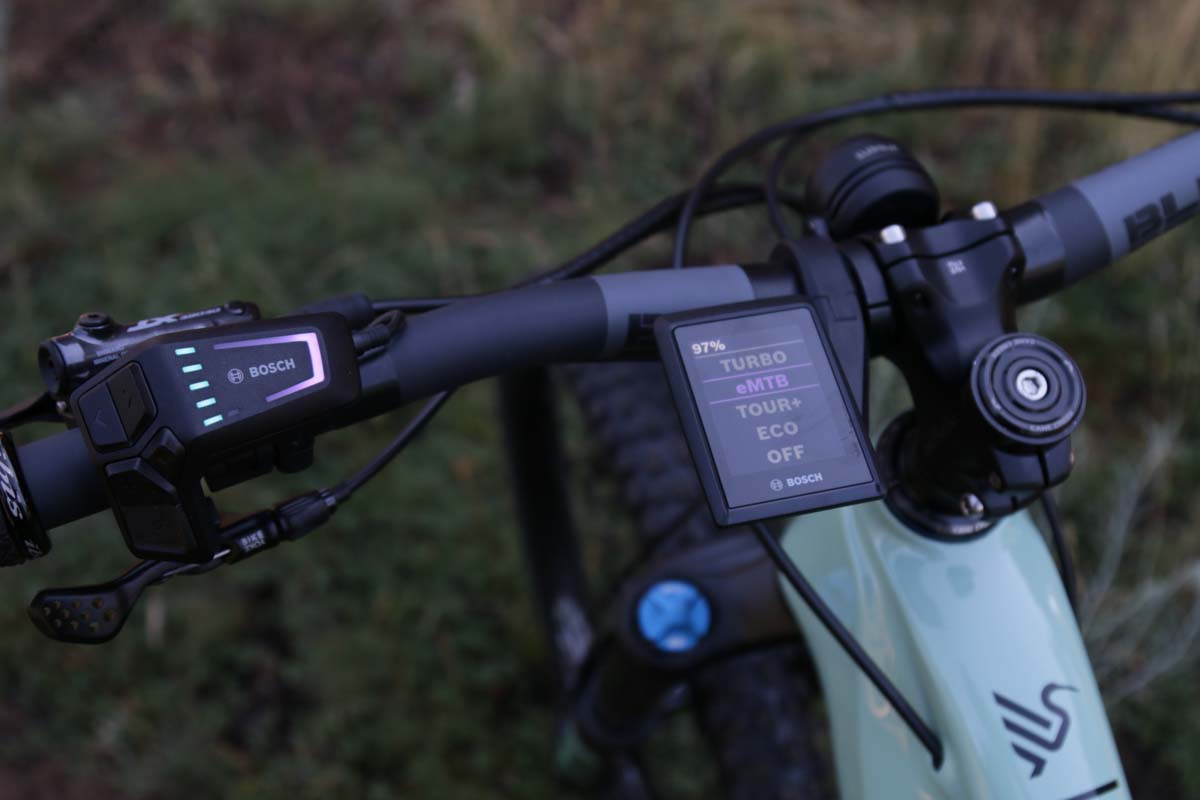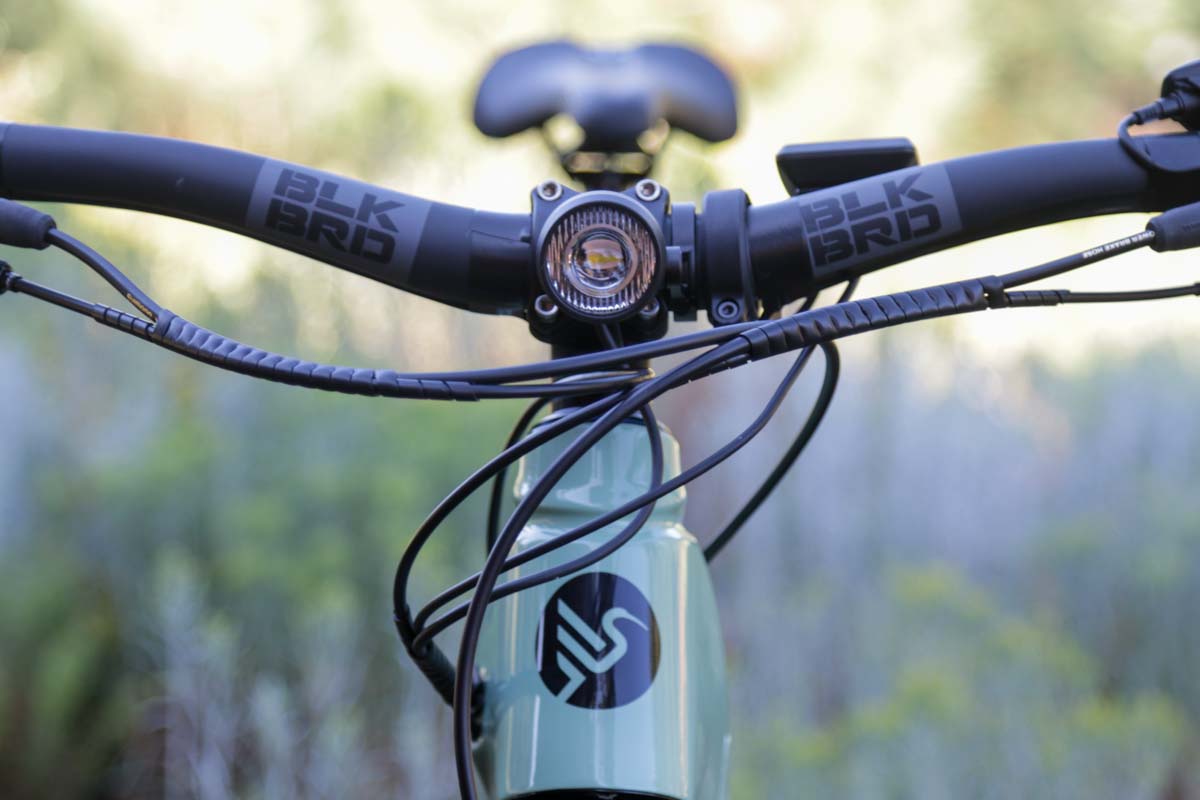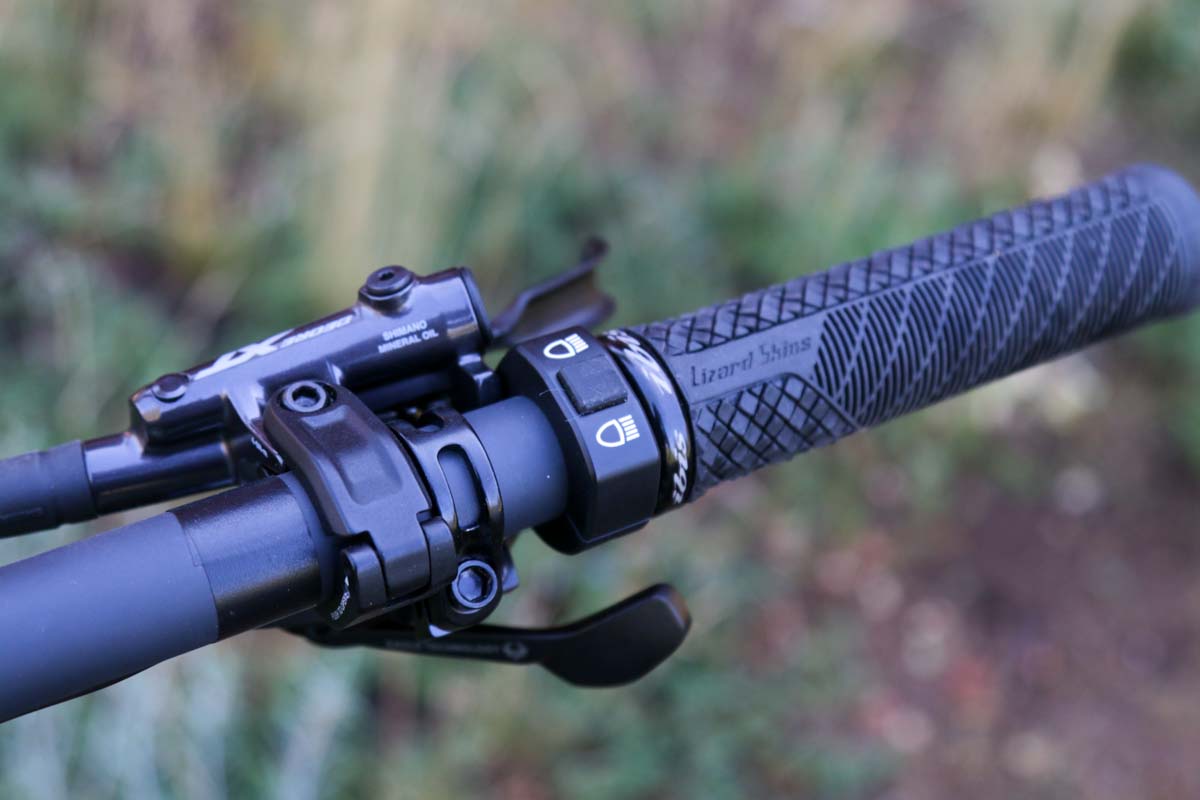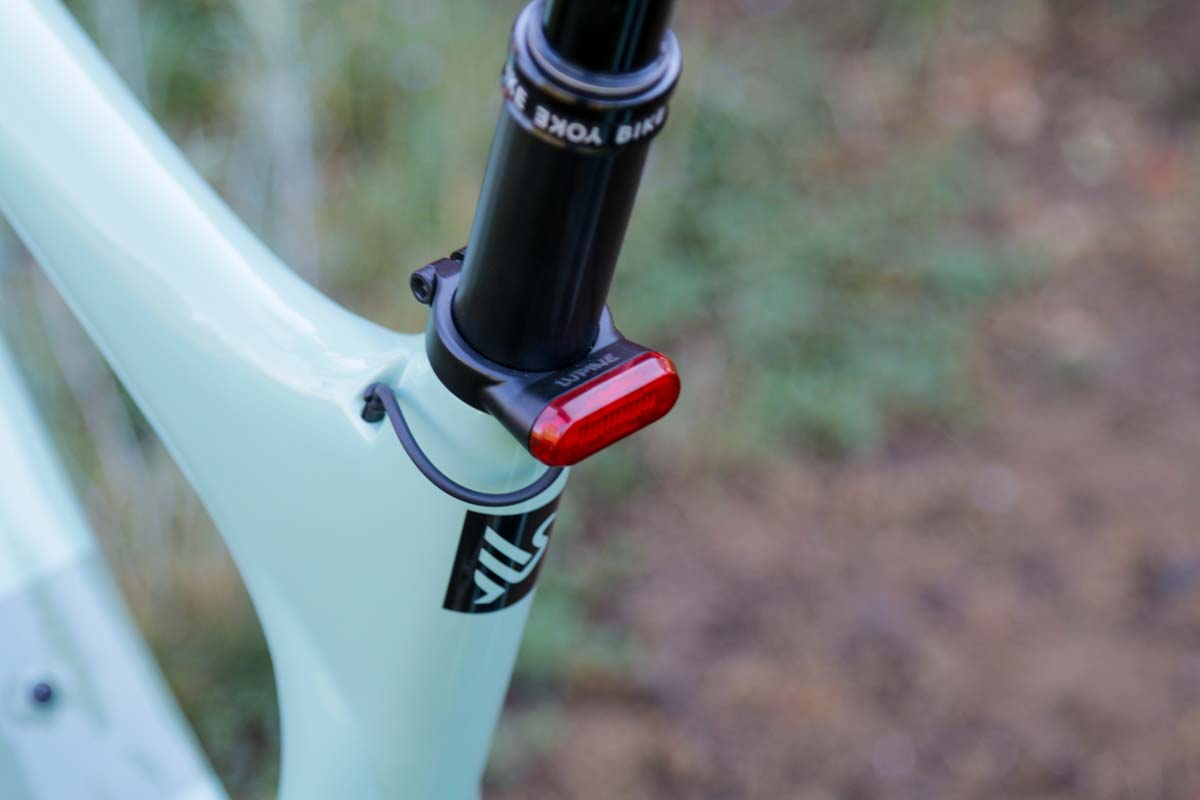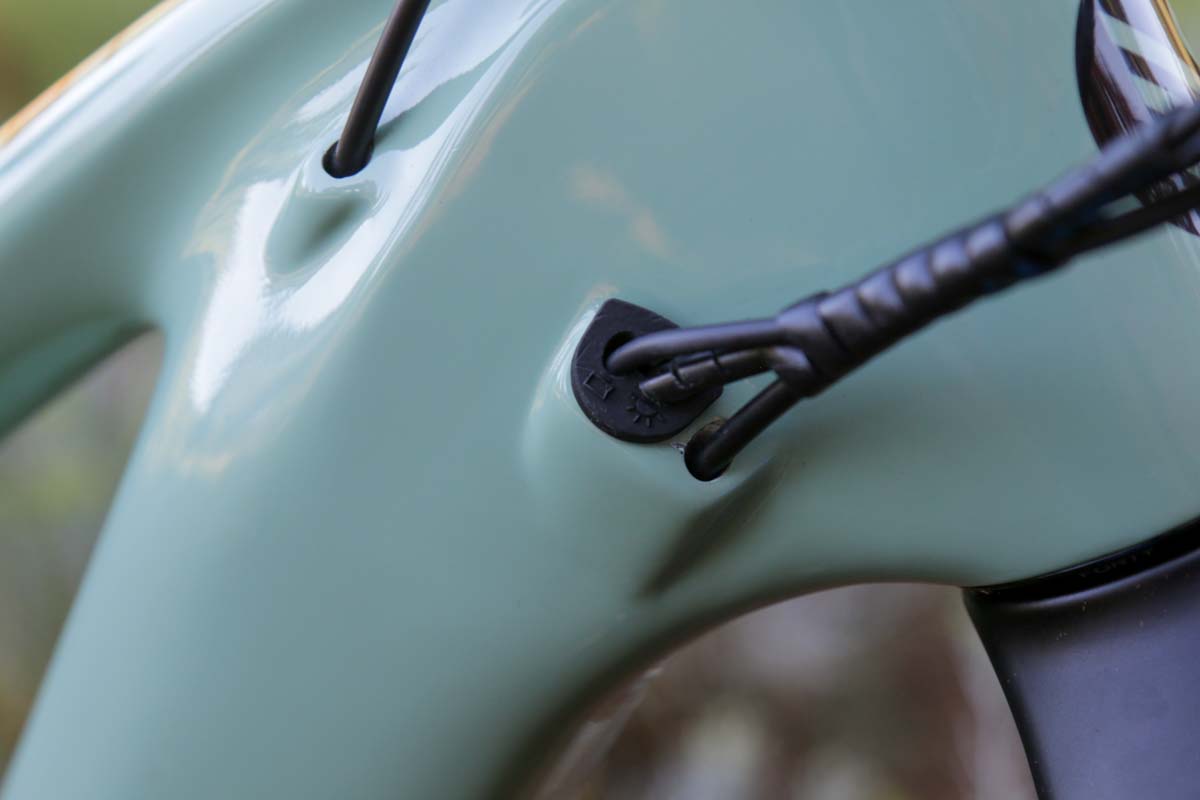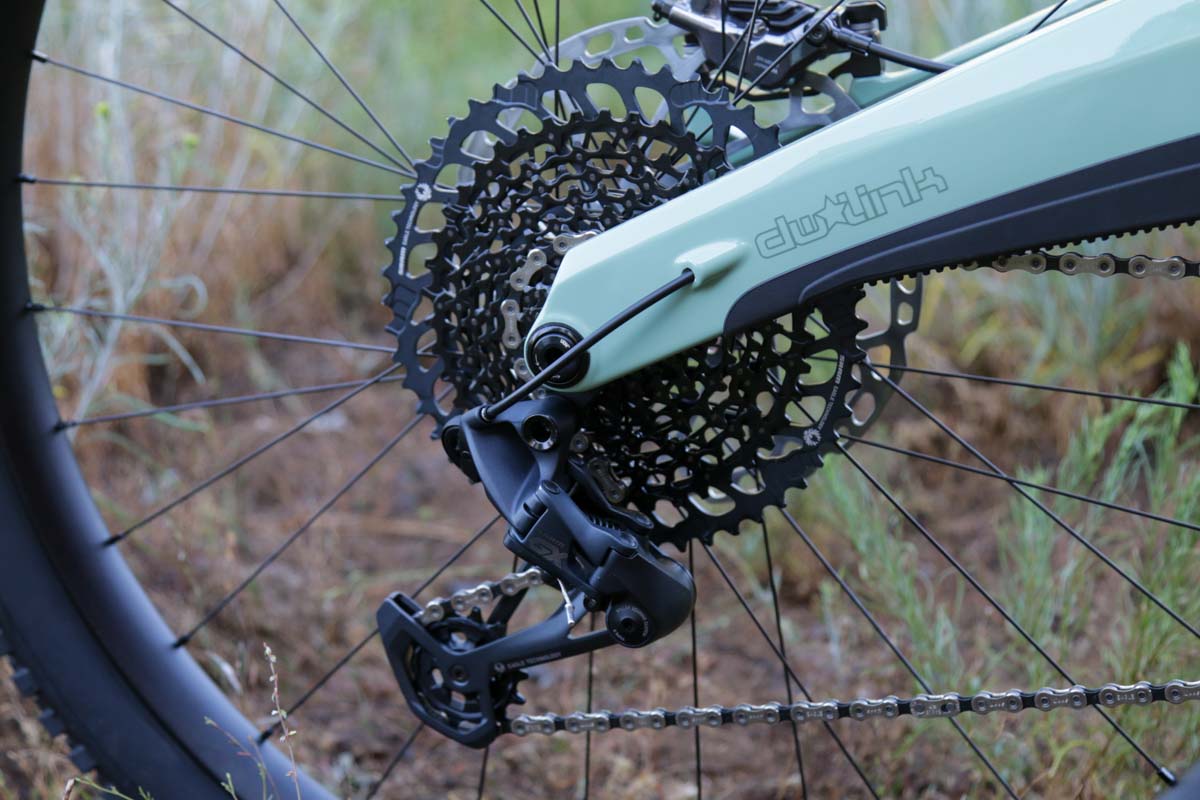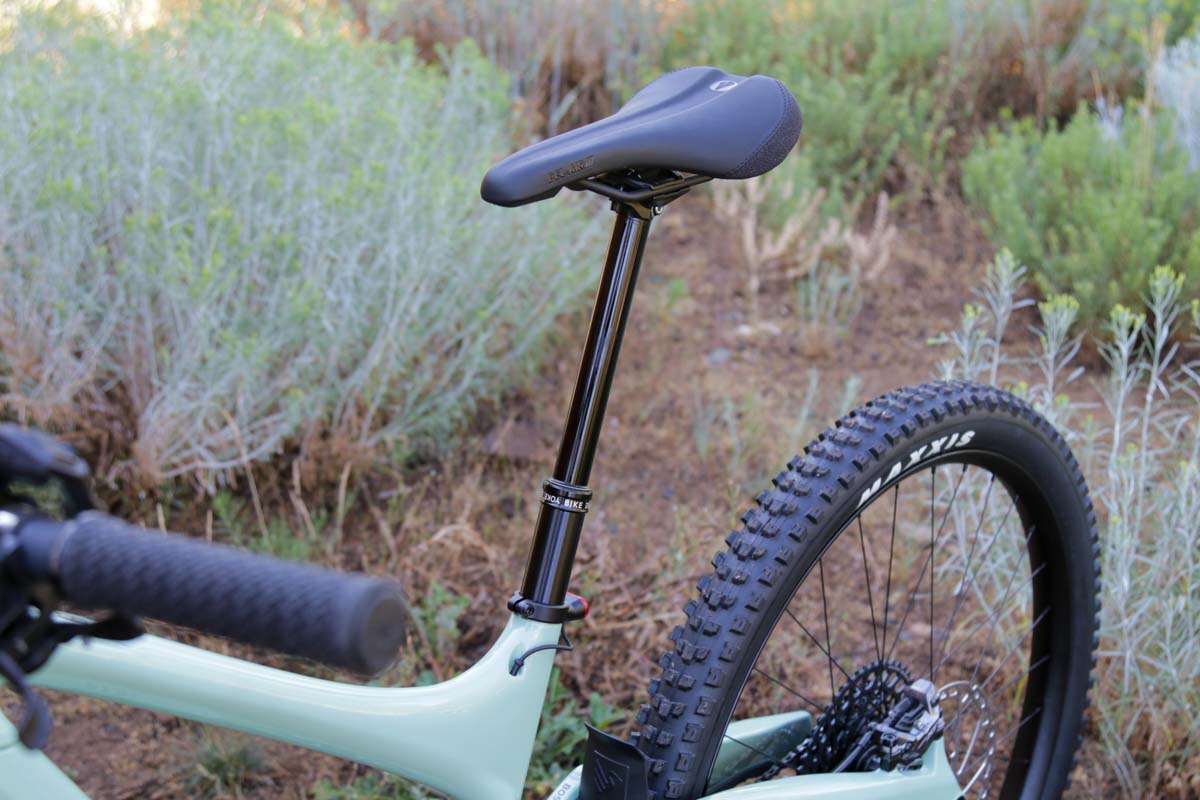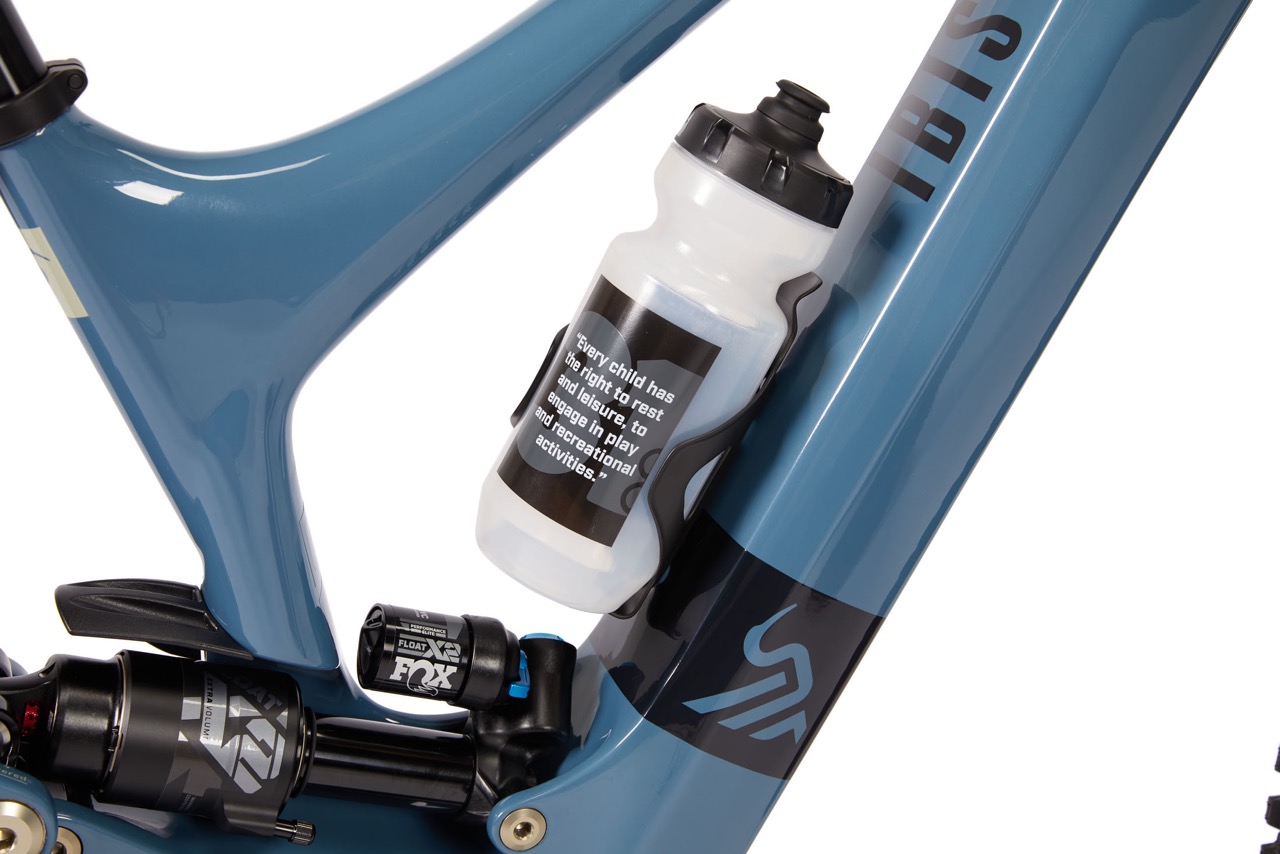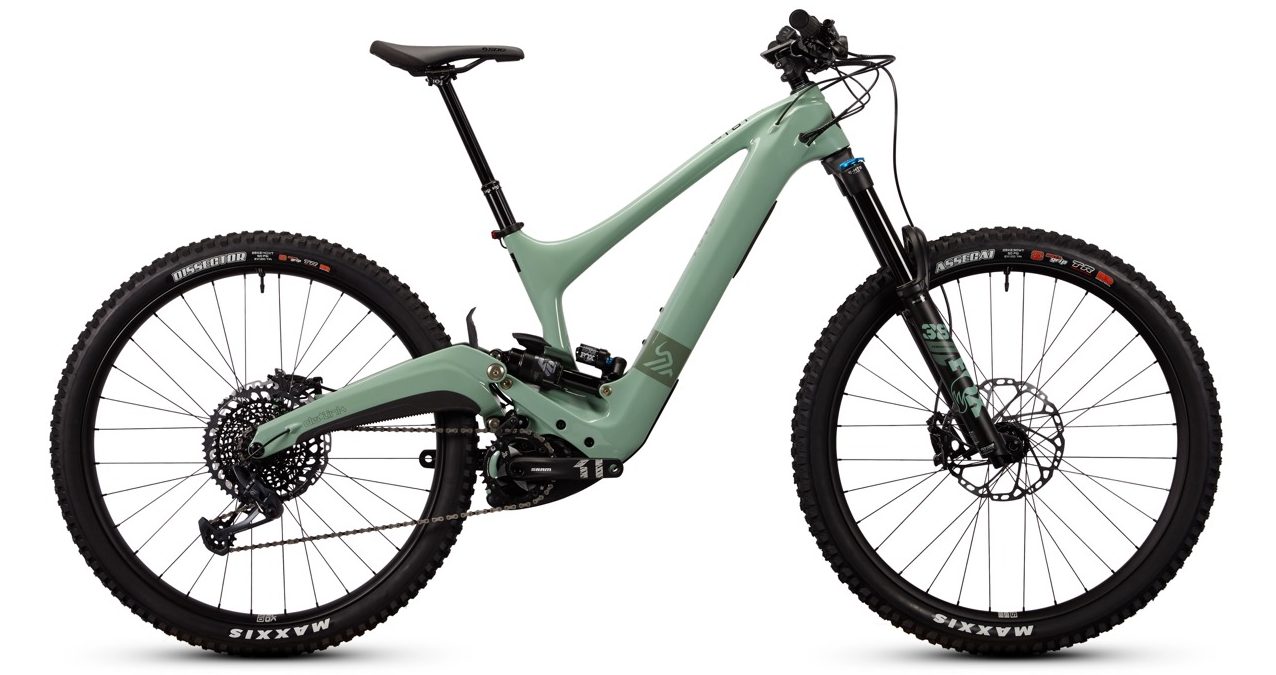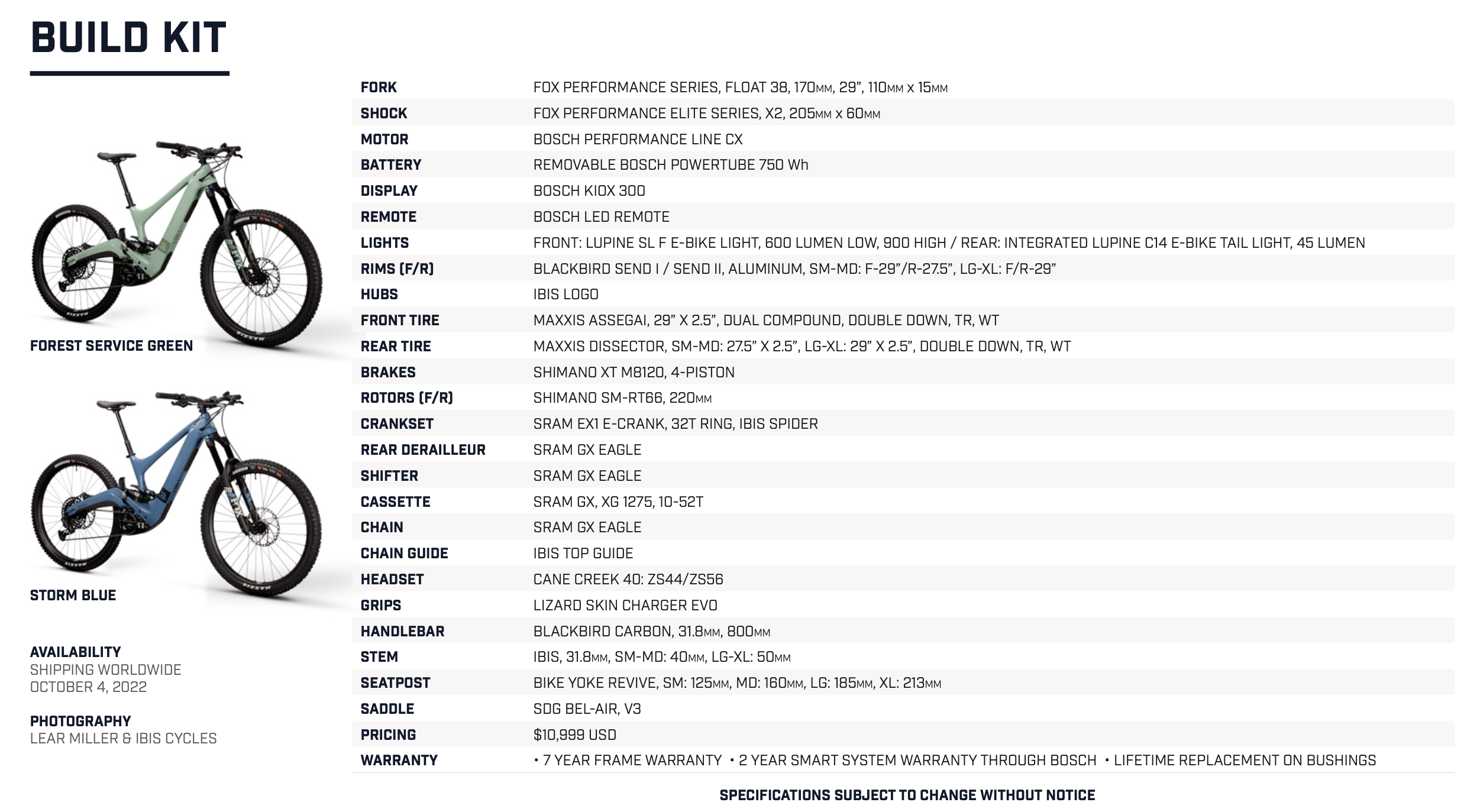The first Ibis ebike is finally here. Technically though, it’s not their first. During the development process, Ibis created two completely different prototype ebikes. Ultimately, the team felt that they weren’t good enough to wear the Ibis badge, so the bikes were scrapped entirely – and at great cost to Ibis.
Going back to the drawing board led to the creation, and ultimately, the launch of the Ibis Oso. An ebike with enough suspension, braking, and power to deliver the control they felt was needed. An ebike they’re proud to call their own.
About that frame design
One of the first things anyone will likely notice about the Oso is the frame design itself. Built with a burly, raised-stay swingarm, the frame also includes an offset rear shock design with a single-sided “shock tunnel”. Obviously, Ibis wanted the Oso to have a certain appearance, but the real driving factor for almost every design feature simply came down to packaging. As in, how could Ibis package long travel, short chainstays, big tire clearance, long dropper compatibility, and the ebike system into a compact frame across size ranges?
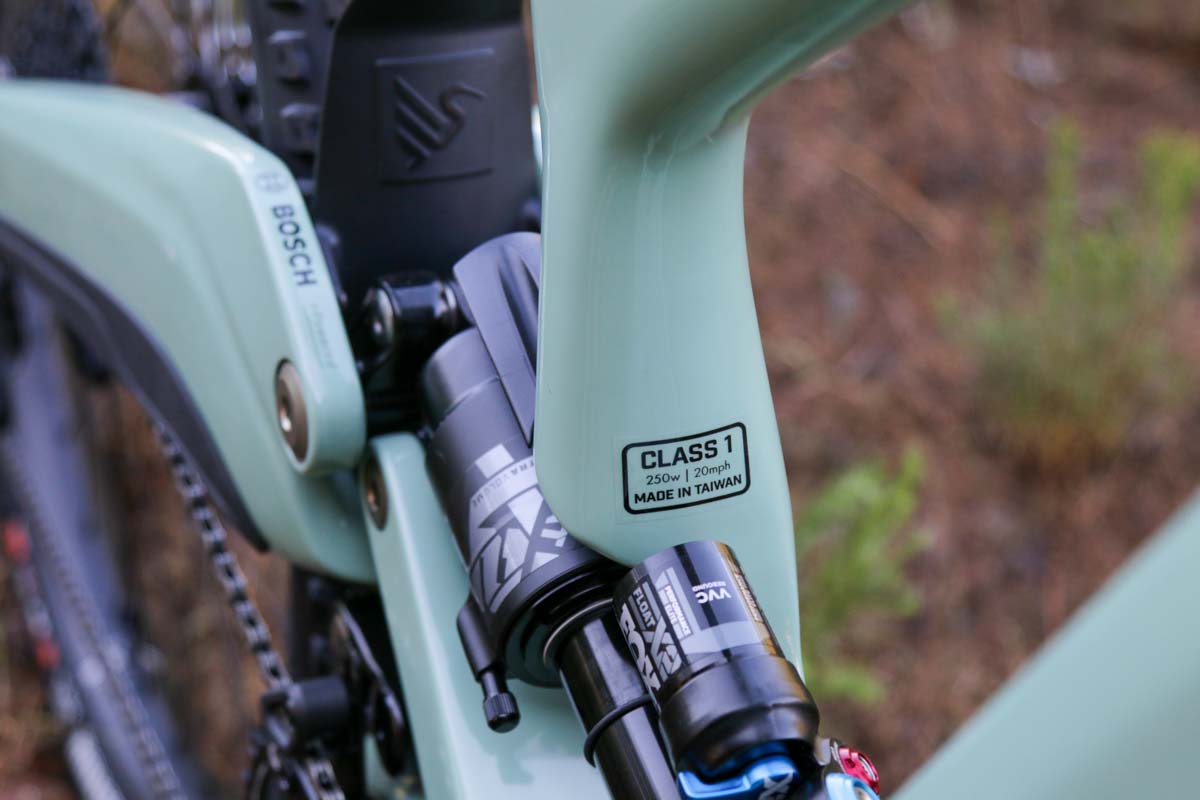
As Ibis’ Lead Engineer, Andy Jacques-Maynes, told us, “there is almost no room between the parts.” Design elements like the offset rear shock were implemented because shifting it to one side meant you got more room for bigger shocks and more carbon fiber on the other side which yielded a stronger frame than a shock tunnel.
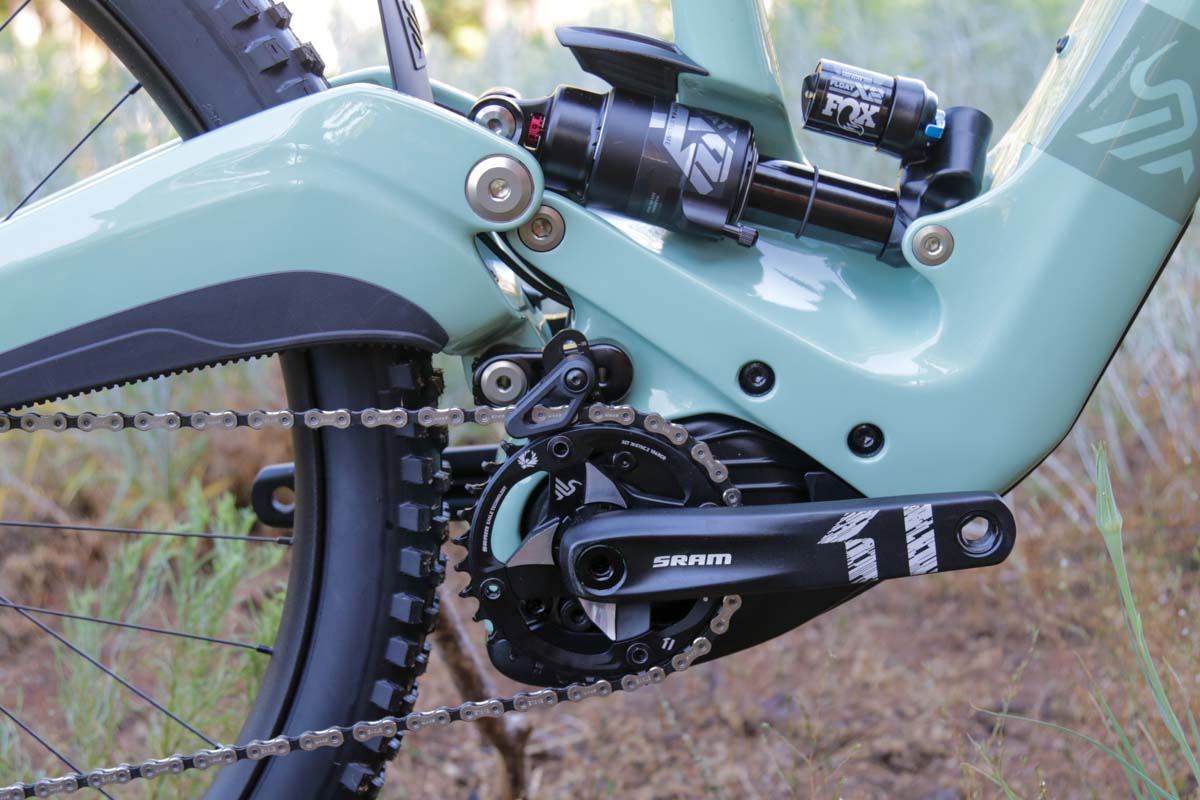
It also removes any “well” underneath the shock where water, mud, and dirt could accumulate. Instead, all the debris just sloughs off to the side – in front of the chainring.
Designed in the Metaverse?
Over the course of a few days with Ibis, the complicated nature of designing an ebike like the Oso surfaced repeatedly. And for a relatively small brand, the possibility of getting that first sample back and discovering an unsightly error isn’t really an option.
Apparently, part of the solution to this problem can be found in the Metaverse – or something along those lines. During a late presentation after dinner, Ibis CEO Hans Heim broke out a VR headset and gave us a glimpse at the Oso frame in Virtual Reality. I wish we could show you what I saw inside, but imagine a frame that can be manipulated however you’d like, even making it so big that you can ‘walk’ through the inside.
This supposedly allows engineers and designers to view their designs in 3D space to catch surface imperfections that might not be visible on a traditional computer screen, or better understand how the various parts of the bike will interact. For a company like Ibis that puts a lot of thought and creativity into their bike designs, this was a fascinating glimpse into the future of bike design.
Big Brakes
Control was a keyword for Ibis when describing the Oso. From suspension to braking, they wanted an ebike that you could get the most out of while keeping things well under control. That means big, powerful brakes with 220mm rotors and four-piston calipers front and rear. The frame features a 200mm post mount swingarm so you could technically downsize the rear to 200mm if you wanted, but we’d keep it as is.
Suspension travel: long or longer
The tightly packaged suspension system features Ibis’ “first-ever upper-link suspension dw-link platform.” In stock configuration, it offers 155mm of rear travel, but it can be bumped up to a massive 170mm of travel by swapping the stock 205 x 60mm rear shock to a 205 x 65mm shock. The suspension linkage is tuned to allow for a sensitive initial stroke, but it’s massively progressive late in the stroke (this helps prevent bottom-out on a 53lb bike) which makes it great with a coil shock as well.
Along those lines, that funky swingarm is all about practicality. During the design phase, it was determined that this would offer the best path to tire clearance with short chainstays while keeping Boost 148mm rear spacing.
Up front, the Oso is equipped with a 170mm travel Fox 38 suspension fork. Want more? The frame can also run up to a 190mm travel fork including the option to run a dual crown.
That was actually more complicated to allow than it sounds and was the impetus behind another design feature – the side-mount battery. There’s a tremendous amount of force that a 190mm dual crown suspension fork puts on the downtube of the bike. Not exactly something you want to then have to cut a giant hole in. However, Ibis engineered their way around it with the hole for the huge Powertube 750 battery cut in the side of the downtube instead of the front.
Battery installation & removal
This supposedly allowed them to retain the stiffness needed for the biggest forks while keeping the battery easily accessible.
To remove, it’s one 6mm Allen wrench to remove the door with a 1/4 turn, then the same wrench to remove one bolt on the battery. The battery door has a seal to keep out most water and debris, but you shouldn’t fully submerge it in water.
Wheel and Tire Size
While all models feature 2.5″ Wide Trail tire clearance with plenty of mud clearance, not all bikes have the same size rear wheel. The small and medium bikes are mulleted with a 27.5″ rear wheel and shorter 439mm chainstays. The large and extra large bikes have a 29″ rear wheel and 444mm chainstays.
Geometry
Offered in four sizes, there is more than geometry that sets them apart. The small bike is, well, small. That means it doesn’t fit the same ebike battery as the larger models (more on this below). As mentioned, the small and medium also run 29/27.5″ wheels while the large and extra large run 29/29″. Not only do the frame offer size-specific wheels and chainstay lengths, but they also run size-specific seat tube angles from 77-79º. Measured at the average saddle height per size, the varying seat tube angles are said to offer a more consistent ride experience from bike to bike.
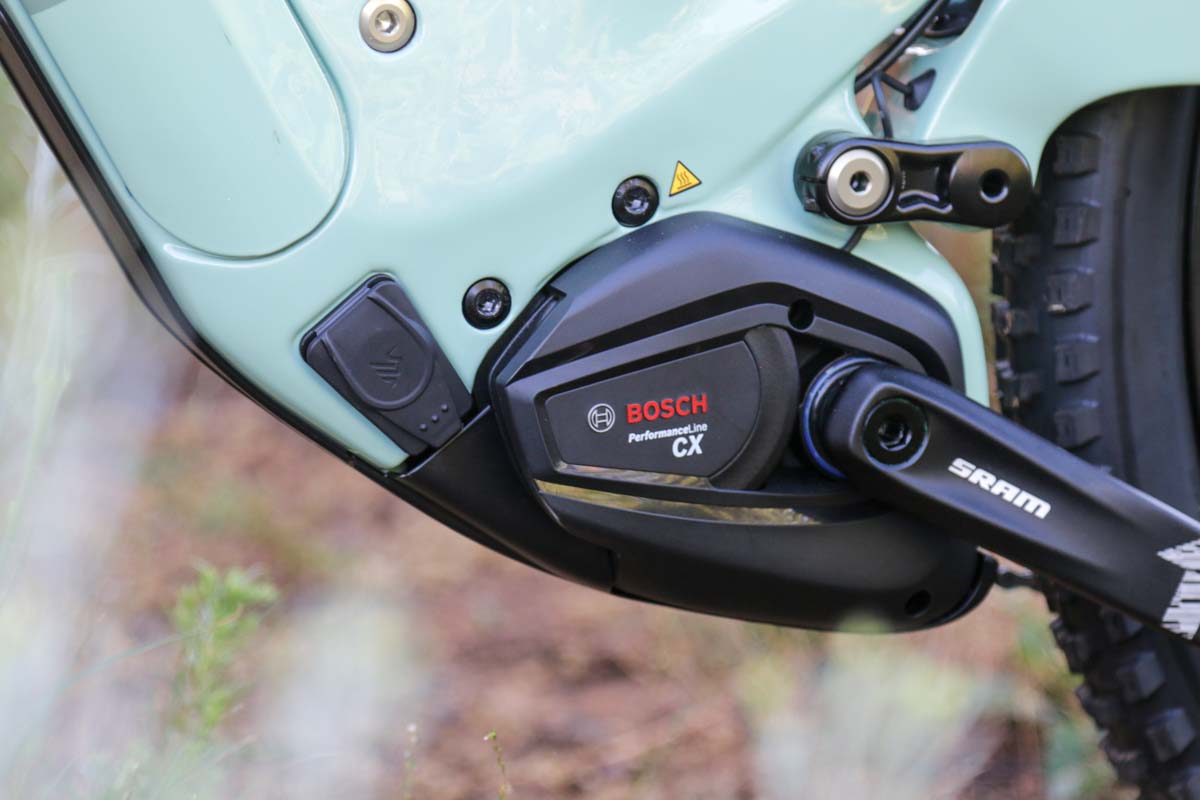
Bosch Smart System (mostly)
The Ibis Oso was designed around the Bosch Smart System for a reason. Mainly, that reason is how the system feels on the trail. Ibis felt that the power delivery of the Bosch system is smoother, and it prevents the bike from “doing something goofy underneath you.” The team at Ibis pointed out that there’s no need to hold the brake to feather the throttle, or anything else that would prevent it from riding like a normal bike.
Bosch also offers an expansive service network, a 2-year warranty on the Smart System, and offers support for legacy components for years down the road. Ibis points out that the Powertube 750 will provide around 1000 charges until it reaches about 80% of its initial capacity.
Also key to the Bosch decision was the introduction of their e-MTB mode – essentially an automatic power delivery mode that increases assist when you need it, and decreases it when you don’t. This is what provides the “uphill flow” as Bosch puts it, or for Ibis – “downhill both ways.”
Available with the Performance Line CX motor with 85Nm of torque, the Bosch Smart System also includes the huge Powertube 750 battery, and the Bosch Kiox 300 display and LED remote.
However, initially, the Smart System will not be offered on the small Oso. Instead, it will come with a Bosch Gen 4 motor and a 625Wh battery. We’re told that Bosch doesn’t have the smaller PowerTube batteries available for the Smart System yet, and the small Oso simply can’t fit a larger battery due to the smaller frame. Expect the small Osos to ship with the Gen 4 system at least for the first year. After that, it will be upgraded to the Smart System when the batteries become available.
Control of the system is provided through the LED remote and the Kiox 300 display (which is removable if you’d rather not see it). Each of the settings is color coded, and the LED remote then displays the corresponding color on the right side of the remote. The left-side LEDs provide the level of boost you’re currently using.
Lights: Not an afterthought
It may be a little odd to think about permanent lighting on a mountain bike, but it actually makes a lot of sense. You have an onboard power source that’s almost always charged, the additional weight is negated by the assist, and the control takes up very little space on the bar. In return, you get a light source that is always there when you need it, is compatible with the dropper post and suspension, and at up to 900 lumens for the front, it should be adequate for night riding with the addition of a helmet-mounted light.
The Oso includes a Lupine SL F E-bike light up front with a 600-lumen low setting and 900 high setting, and an integrated Lupine C14 tail light capable of 45 lumens. Settings include running just the front or just the rear light, or running both simultaneously. The rear light is solid only though since flashing rear lights are not allowed in Germany.
Along those lines, German regulations require the lights to keep working even if the battery ‘dies’ – providing 2hrs of illumination after the ebike motor shuts off at 3-4% battery life remaining. Ibis points out that you aren’t losing any range at all by adding the lighting.
You may be thinking, “but I don’t ride at night, why would I need lights?” Even if you don’t ride at night, ebikes open up the ability to ride to new zones rather than hopping in a car. Running lighting while riding on the road is always a good idea, and this makes it so you never have to worry about whether your lights are charged, or installed on your bike.
Additional Details
With all the additional wiring, Ibis created a tube-in-tube system to make routing as simple as possible. Almost all routing is accomplished by pushing the housing in through one hole, and it pops out the other. The only exception to this is the dropper post housing. Due to design constraints, you have to drop the motor to replace the seat post housing which is said to be a 45min-1hr process.
Like the updated Ripley V4S and Ripmo V2S, the Oso runs a SRAM UDH for the derailleur hanger and will be sold in a single build with a SRAM GX Eagle mechanical 1×12 drivetrain.
In spite of the interrupted seat tube, the frame offers deep insertion for dropper posts. Complete builds will include the Bike Yoke Revive with small frames running a 125mm dropper, medium running a 160mm dropper, large running a 185mm and XL frames getting the full 213mm travel.
True to form, Ibis hasn’t forgotten about room for a water bottle either. Medium – extra large frames offer room for a full-size 26oz bottle, while small frames still have enough room for a 22oz bottle. On all sizes, a side loading cage is recommended.
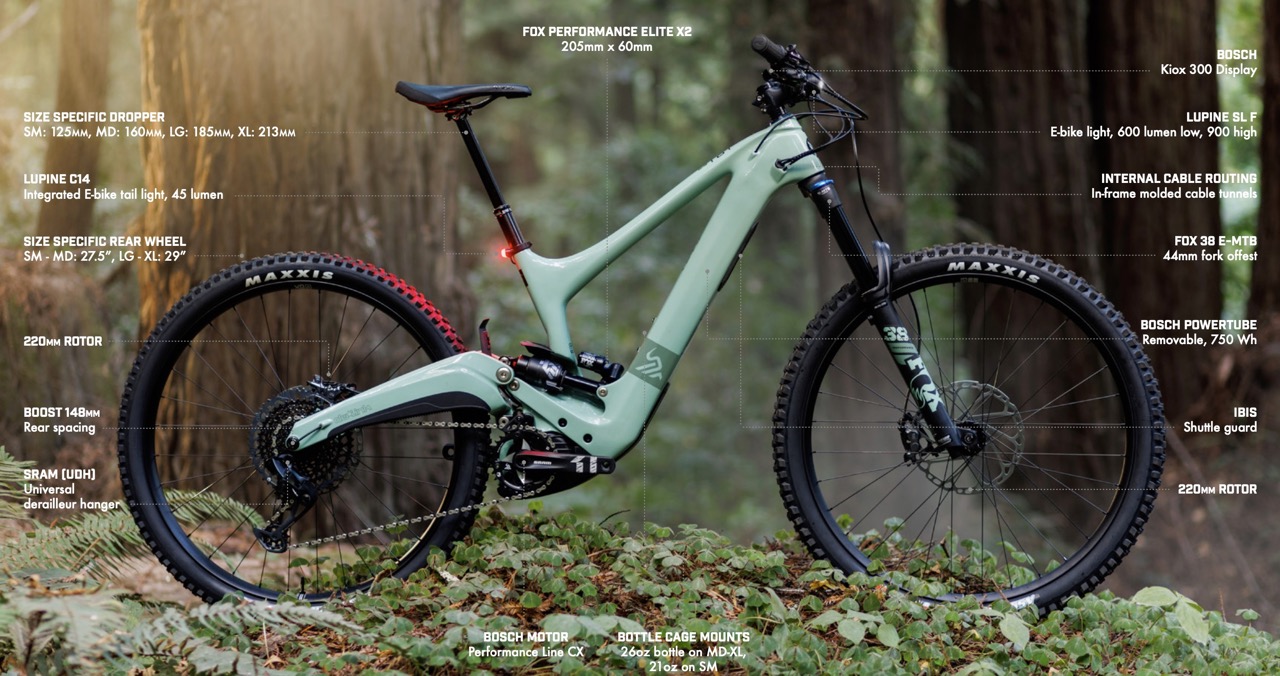
The frame also includes molded rubber downtube and motor protectors, along with molded rubber swingarm protectors.
Ibis Oso Weight
The Oso is a big bike, and when fitted with Maxxis Double Down TR WT tires, big brakes, and the stock 170/155mm travel suspension, it weighs in at a claimed 53lbs for a large.
First Impressions
That weight was one of the reasons our first impressions will have to wait since my shoulder wasn’t ready to muscle around a heavy ebike. Just before the launch of the Oso, I had a bad crash where a loose rock perfectly wedged itself between my chainring, the frame, and the ground – all while traveling at a high rate of speed. The result was an immediate halt of the bike and OTB that left me with a partially separate shoulder, damaged ribs, and a concussion just days before I was supposed to ride the Oso.
The healthy riders at the launch seemed to have a great time riding some epic routes right out of Scot Nichol’s backyard in Tahoe.
Pricing & Availability 
Available today with bikes already on shop floors, the Ibis Oso will be offered in either Forest Service Green or Storm Blue, and in one build kit for $10,999. Ibis offers a 7-year warranty on the frame with lifetime bushing replacement, and there is a 2-year warranty on the Smart System through Bosch.
